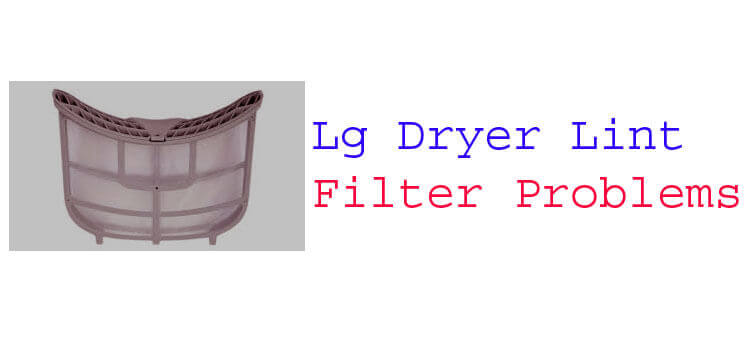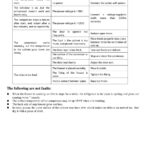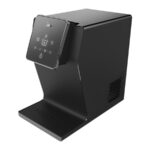LG dryer lint filter problems can be resolved by cleaning or replacing the lint filter. It is important to maintain the filter to prevent fire hazards.
Dryer lint buildup causes a restriction in airflow, causing the dryer to overheat. Overheating generates dryer fires. Lint filters need to be cleaned and cleared after every use to avoid blockage. In this article, we will discuss how to clean, maintain, and replace LG dryer lint filters and avoid potential risks to your household.
By addressing these issues promptly, you can keep your dryer running smoothly and efficiently.

Understanding Lg Dryer Lint Filter Problems
Lint filter problems are common issues that many LG dryer owners face. When your dryer’s lint filter becomes clogged, it can lead to a host of issues and even become a safety hazard. Here are some key points to help you understand LG dryer lint filter problems:
Explanation Of What Causes Lint Filter Problems
- Over time, the lint filter in your LG dryer can become clogged with lint and debris from your clothes. This buildup can prevent the dryer from functioning correctly and cause a range of issues.
- Sometimes, the issue may be with the lint filter itself, either because it is damaged or improperly installed. In this case, the filter may not be able to catch all of the lint and debris from your clothes.
Dangers Of Clogged Lint Filter
- A clogged lint filter can be a fire hazard since it can restrict the flow of air within the dryer and cause it to overheat. This can lead to a fire that can damage your home and property.
- A clogged lint filter can also cause your dryer to work less efficiently, leading to increased energy consumption and higher utility bills.
Making sure that your LG dryer’s lint filter is clean and in good condition is essential for the proper functioning of your dryer. It’s important to clean the lint filter after every load of laundry to prevent it from becoming clogged.
Additionally, it’s a good idea to inspect the filter regularly and replace it if it appears to be damaged or worn out.
By understanding the causes of lint filter problems, the dangers of a clogged filter, and the importance of proper maintenance, you can keep your LG dryer running smoothly and safely for years to come.
Signs Of LG Dryer Lint Filter Problems
Lg dryer lint filter problems: signs of LG dryer lint filter problems
Lint filter problems are among the most commonly reported issues with LG dryers. They are also some of the easiest to prevent. In this section, we will discuss common signs that indicate you have a clogged lint filter. We will also explore the effects of not cleaning the filter and provide tips on maintaining your dryer.
How To Detect A Clogged Lint Filter
LG dryers are equipped with a lint filter, which collects lint and other debris that would otherwise clog up the dryer’s ductwork. To determine if your dryer has a clogged lint filter, watch out for the following signs:
- Longer drying times: If your dryer takes longer than usual to dry clothes, it could be due to a clogged lint filter. A dirty filter restricts airflow, making it harder for the dryer to do its job.
- Hot clothes or exterior: A clogged lint filter can cause clothes to feel hot and a dryer’s exterior to become too hot to touch. This can be due to restricted airflow that prevents the dryer from releasing heat effectively.
- Visible lint buildup: If you see lint buildup on the filter or in the dryer vent, it’s likely that the filter is clogged. This can also indicate that the filter hasn’t been cleaned in a while and needs immediate attention.
Effects Of Not Cleaning Lint Filter
When left unattended, a clogged lint filter can have several negative effects. Some of these effects include:
- Fire hazard: Accumulated lint is highly flammable and can easily ignite, posing a fire hazard to your home. According to the National Fire Protection Association, dryers are responsible for around 17,000 house fires each year. Failure to clean the lint filter is a leading cause of these fires.
- Increased energy consumption: A clogged filter restricts airflow and makes your dryer work harder to dry clothes, which means your energy bills can increase significantly.
- Reduced lifespan of the dryer: A clogged filter can strain a dryer’s components, reducing its lifespan. This could result in costly repairs or the need to purchase a new dryer altogether.
To avoid these negative effects, it’s important to clean your dryer’s lint filter after every use.
Remember, a dirty lint filter can cause a host of problems that could jeopardize the safety of your home, increase energy consumption, and reduce the lifespan of your dryer. Be sure to keep an eye out for the signs that indicate a clogged lint filter, and make cleaning it a part of your regular laundry routine.
Step-By-Step Guide To Cleaning LG Dryer Lint Filter
Lint buildup in dryers can cause a variety of issues, including reduced airflow, longer drying times, and even safety hazards like fires. As an LG dryer owner, it’s essential to understand how to clean your unit’s lint filter to avoid these problems.
This guide will provide you with all the information you need to clean your LG dryer’s lint filter, including the tools you’ll need and a step-by-step process to follow.
Tools Needed To Clean Lint Filter
Before you start cleaning your LG dryer’s lint filter, make sure you have the following tools on hand:
- Lg dryer
- Lint filter
- Soft-bristled brush or vacuum attachment
- Mild soap or detergent (optional)
- Warm water (optional)
Detailed Instructions On How To Clean Lint Filters
Cleaning your LG dryer’s lint filter is a simple process that can be completed in just a few minutes. Follow these steps to clean your lint filter:
- Turn off and unplug your LG dryer to ensure your safety while cleaning.
- Locate the lint filter, which is usually located on the top of the dryer’s opening. Gently pull the filter up and out of its slot.
- Remove any visible lint from the filter using your hands or a soft-bristled brush. You can also use a vacuum attachment to suction out any stubborn lint buildup.
- If the filter is particularly dirty, you may need to wash it with mild soap and warm water. Gently scrub the filter with soap and water, then rinse thoroughly and let it dry completely before replacing it.
- Once the filter is clean and dry, place it back into the slot and snap it securely into place.
- Finally, turn your LG dryer back on and run it for a few minutes to ensure it’s working correctly.
Regularly cleaning your LG dryer’s lint filter is essential for maintaining your dryer’s efficiency and safety. By following these simple steps, you can keep your dryer running smoothly for years to come.
Tips For Preventing LG Dryer Lint Filter Problems
Regular Maintenance Schedule
Regular maintenance of an LG dryer’s lint filter is crucial to keeping it running efficiently. Here are some important points to bear in mind when scheduling your dryer maintenance:
- Clean the lint filter after every load: Removing the collected lint after every use will prevent the filter from getting clogged, allowing the dryer to breathe easier and dry clothes more effectively.
- Deep clean the lint filter every six months: Washing the lint filter with warm, soapy water every six months will remove any buildup of the fabric conditioner, which can cause the filter to become less porous and prevent air from flowing through.
- Check the exhaust vent every year: The vent that runs from the back of the dryer to the outside of your home can get clogged with lint over time if not properly maintained. Checking it and removing any blockages will help ensure maximum airflow and reduce the risk of fire.
Best Practices For Lint Filter Maintenance
Regular cleaning of your LG dryer’s lint filter is key to reducing risks and ensuring effective operation. Here are some tips to keep your filter and dryer working at their best:
- Use the right tools: A lint roller or soft, clean brush will help to get into the mesh of the filter to extract as much lint as possible.
- Inspect the filter before each use: Before using your dryer, take a quick glance at the filter to ensure it is free from any obvious blockages. Keep an eye out for tears or holes in the mesh, which can reduce the filter’s ability to trap lint.
- Protect the filter during storage: When storing your LG dryer, make sure the lint filter is clean and completely dry to prevent any mold growth. Wipe down the surrounding area with a damp cloth to remove any dust or debris that might have accumulated over time.
- Consider replacing the filter: Even with proper maintenance, lint filters can wear out over time due to general wear and tear. If you notice any damage or a decline in functionality, buying a replacement filter is a cost-effective way to keep your dryer running smoothly.
By following these simple steps, you can keep your LG dryer lint filter in good working order, reduce the risk of damage to the dryer, and improve the drying efficiency.
Frequently Asked Questions For Lg Dryer Lint Filter Problems
Why Is It Important To Clean The Lint Filter Regularly?
When it comes to maintaining household appliances, we often focus on the big tasks like cleaning the refrigerator or scrubbing the oven. However, there’s one small but crucial component that often goes overlooked: the lint filter in your dryer. Regularly cleaning the lint filter may seem like a minor chore, but it plays a significant role in both the performance and safety of your dryer. In this article, we’ll delve into why it’s essential to clean the lint filter regularly and the benefits it brings.
Fire Prevention:
One of the most critical reasons to clean your lint filter regularly is fire prevention. Lint is highly flammable, and when it accumulates in your dryer’s lint trap and venting system, it poses a serious fire hazard. The combination of heat and lint can lead to a dryer fire, potentially causing significant damage to your home and putting your family’s safety at risk. By routinely cleaning the lint filter, you reduce the chances of lint buildup and minimize this fire risk.
Improved Dryer Efficiency:
A clean lint filter allows for better airflow in your dryer. When the filter is clogged with lint, your dryer has to work harder to circulate air, leading to increased energy consumption and longer drying times. This not only raises your energy bills but also puts more wear and tear on your appliances. Regular cleaning of the lint filter helps maintain your dryer’s efficiency, reducing energy costs and extending its lifespan.
Clothing Care:
Lint buildup in the filter can transfer to your clothes during the drying process. This can leave your garments covered in lint and reduce their overall quality and appearance. By cleaning the lint filter before each load, you’ll keep your clothes looking their best and extend their lifespan.
Preventing Dryer Malfunctions:
A blocked lint filter can lead to other dryer malfunctions, such as overheating. When the dryer can’t expel hot air properly due to lint blockage, it may cause the heating element to overheat and fail. This can result in costly repairs and inconvenience. Regularly cleaning the lint filter helps prevent such issues and keeps your dryer running smoothly.
Environmental Impact:
A more efficient dryer not only saves you money but also benefits the environment. Reduced energy consumption means a smaller carbon footprint, helping to conserve energy and reduce greenhouse gas emissions. By maintaining your dryer and regularly cleaning the lint filter, you’re doing your part to support sustainability.
While it may seem like a small task, cleaning the lint filter in your dryer is an essential maintenance step that can’t be overlooked. It plays a crucial role in fire prevention, improves dryer efficiency, preserves clothing quality, prevents malfunctions, and has a positive impact on the environment. Make it a habit to clean your lint filter before each load to ensure your dryer operates safely, efficiently, and effectively. By doing so, you’ll not only protect your home and loved ones but also save money and reduce your environmental footprint.
How Often Should I Clean My LG Dryer Lint Filter?
Maintaining your LG dryer is essential to ensuring it functions efficiently and safely while extending its lifespan. One often overlooked yet crucial aspect of dryer maintenance is cleaning the lint filter. In this article, we’ll explore how frequently you should clean the lint filter in your LG dryer to keep it running smoothly and to promote safety and energy efficiency.
After Every Load:
The general rule of thumb for cleaning your LG dryer’s lint filter is to do so after every drying cycle. This frequent cleaning ensures that the filter remains free from lint buildup, allowing for optimal airflow. It also prevents lint from accumulating in the dryer venting system, reducing the risk of fire hazards.
Heavy-Use Situations:
If you frequently use your LG dryer for large loads, bulky items, or materials that shed more lint (such as towels or blankets), consider checking the lint filter mid-cycle. This extra precaution helps ensure that the filter doesn’t become overwhelmed with lint during the drying process.
Regular Inspection:
In addition to post-cycle cleaning, it’s a good practice to visually inspect the lint filter before starting a new load. Check for any visible lint or debris, and if you notice any, remove it before using the dryer. This proactive approach can prevent potential issues and maintain efficient drying.
Periodic Deep Cleaning:
While cleaning the lint filter after each cycle is essential, it’s also important to perform a more thorough cleaning periodically. Remove the lint filter and wash it with warm, soapy water to remove any residue that may have built up over time. Allow it to dry completely before reinserting it into the dryer.
Additional Tips:
Vacuum the area around the lint filter to capture any loose lint and debris that may have accumulated.
Inspect the dryer venting system regularly and clean it at least once a year to ensure proper airflow and reduce fire risks.
Maintaining your LG dryer’s lint filter is a simple yet crucial task to ensure its efficient operation, safety, and longevity. Cleaning the lint filter after every drying cycle, especially in heavy-use situations, is essential. Regular visual inspections and periodic deep cleaning further contribute to optimal performance. By following these guidelines, you can enjoy hassle-free drying while promoting safety and energy efficiency in your home.
What Should I Do If The LG Dryer Lint Filter Is Clogged?
A clogged lint filter in your LG dryer can lead to reduced efficiency, longer drying times, and even potential safety hazards. It’s crucial to address this issue promptly to ensure your dryer operates smoothly and safely. In this guide, we’ll walk you through the steps to take if you find that your LG dryer’s lint filter is clogged, keeping your appliance in top condition.
Turn Off and Unplug the dryer.
Safety is paramount. Before doing anything, turn off the dryer and unplug it from the power source. This step prevents any electrical accidents while you work on the lint filter.
Remove the Lint filter.
Locate the lint filter in your LG dryer. It’s typically located inside the door frame or on the top of the dryer. Gently pull out the lint filter from its slot.
Remove Visible Lint:
Use your fingers or a soft brush to remove any visible lint on the lint filter. Make sure to get into the corners and edges, as lint can accumulate there.
Inspect the Lint Filter:
Examine the lint filter closely for any stubborn buildup or residue. If you notice that the lint filter is still clogged or partially blocked, it’s time for a more thorough cleaning.
Wash the Lint Filter:
Take the lint filter to your sink. Run warm water over it and use a soft brush or a gentle stream of water to wash away any remaining lint, debris, or detergent residue. Avoid using harsh chemicals or abrasive brushes, as they can damage the filter.
Dry Thoroughly:
After washing, let the lint filter dry completely. Ensure it’s completely dry before reinserting it into the dryer.
Clean the Dryer Drum:
While the lint filter is out, take a moment to inspect and clean the inside of the dryer drum. Use a soft cloth or a lint brush to remove any lint or debris that may have accumulated.
Reinsert the Lint Filter:
Once the lint filter is dry, slide it back into its slot in the dryer.
Plug In and Test:
Plug the dryer back in and turn it on. Run a short test cycle to ensure that it’s operating smoothly and efficiently.
Regular Maintenance:
To prevent future clogs, make it a habit to clean the lint filter after every drying cycle. Additionally, schedule periodic deep cleanings of the lint filter with warm, soapy water and thorough drying.
A clogged lint filter in your LG dryer can lead to performance issues and safety concerns. By following these steps to address a clogged lint filter promptly and maintaining regular cleaning habits, you can keep your LG dryer running efficiently, extend its lifespan, and ensure a safe and hassle-free laundry experience.
Can I Use My LG Dryer Without A Lint Filter?
LG dryers are trusted appliances known for their efficiency and reliability. However, as a responsible user, you may wonder if it’s safe to use your LG dryer without a lint filter. In this article, we’ll explore this question and provide you with the information you need to make an informed decision about the lint filter in your LG dryer.
The Importance of a Lint Filter:
Before we delve into whether you can use your LG dryer without a lint filter, it’s essential to understand the role of the lint filter in the drying process. The lint filter serves several critical functions:
Lint Removal:
As your dryer operates, it produces lint – tiny fabric fibers that become airborne during the drying cycle. The lint filter traps these fibers, preventing them from circulating through your dryer’s venting system.
Airflow:
The lint filter ensures proper airflow within the dryer. Unrestricted airflow is essential for efficient drying and preventing overheating.
Fire Safety:
Lint is highly flammable. A clogged lint filter or venting system can increase the risk of a lint-related fire hazard.
Can You Use Your LG Dryer Without a Lint Filter?
In short, it is not recommended to use your LG dryer without a lint filter. Here’s why:
Efficiency:
Operating your dryer without a lint filter can lead to reduced drying efficiency. Lint buildup inside the dryer can obstruct airflow, making it harder for your appliance to dry your clothes effectively. This can result in longer drying times and increased energy consumption.
Safety Concerns:
Removing the lint filter increases the risk of lint buildup within the dryer’s internal components and venting system. As mentioned earlier, lint is highly flammable. Accumulated lint in these areas can pose a significant fire hazard.
Clothing Protection:
Without a lint filter, lint can be more likely to accumulate on your clothes during the drying cycle, reducing their overall quality and appearance.
What to Do If Your Lint Filter Is Damaged or Missing
If your LG dryer’s lint filter is damaged or missing, it’s crucial to replace it with the appropriate filter designed for your specific dryer model. LG offers replacement lint filters that are easy to install and ensure proper airflow and safety.
In conclusion, it’s not advisable to use your LG dryer without a lint filter. The lint filter plays a vital role in maintaining drying efficiency, ensuring safety, and preserving the quality of your clothes. If you have a damaged or missing lint filter, be sure to obtain a suitable replacement from LG to ensure your dryer operates as intended. Prioritizing safety and efficiency will help you make the most of your LG dryer while keeping your clothes and home safe.
How Can I Tell If My LG Dryer Lint Filter Needs Replacement?
Your LG dryer’s lint filter plays a crucial role in ensuring efficient and safe drying cycles. Over time, this essential component can wear out or become less effective, impacting both the performance of your dryer and potentially your safety. In this article, we’ll explore key signs to help you determine when it’s time to replace your LG dryer’s lint filter, allowing you to maintain optimal drying results and safety.
Decreased Drying Efficiency:
One of the first indicators that your lint filter may need replacement is a noticeable decrease in drying efficiency. If your clothes are taking longer to dry than usual or coming out of the dryer still damp, it could be a sign that the lint filter is clogged or worn out. A well-functioning lint filter allows for proper airflow, which is essential for efficient drying.
Visible Damage:
Inspect your lint filter regularly for any visible signs of damage or wear. This includes cracks, tears, holes, or deformities in the filter’s mesh or frame. Even small openings can allow lint to bypass the filter, potentially leading to lint buildup inside your dryer and its venting system.
Lint Accumulation in the Dryer:
If you notice an unusual amount of lint accumulating inside your dryer drum or along the door gasket, it may indicate that the lint filter is no longer effectively capturing lint during the drying process. This excess lint can not only affect drying efficiency but also pose a fire hazard.
Lingering Lint Odors:
An often overlooked sign of a failing lint filter is the presence of lingering lint odors in your laundry or utility room. If you detect a musty or burned smell after drying your clothes, it could be due to lint bypassing the filter and collecting in your dryer’s interior.
Increased Energy Bills:
A lint filter that is no longer functioning correctly can lead to increased energy consumption. If you’ve noticed a spike in your energy bills without a corresponding change in your laundry habits, a faulty lint filter could be the culprit. An efficient filter ensures your dryer operates optimally, reducing energy costs.
Difficulty Cleaning the Filter:
If you find it increasingly challenging to clean your lint filter or if lint seems to adhere stubbornly to the filter’s surface despite regular cleaning, it may be an indication that the filter has reached the end of its useful life.
Your LG dryer’s lint filter is a critical component for efficient drying and fire prevention. Regular inspection and attention to the signs mentioned above will help you determine when it’s time for a replacement. By promptly replacing a worn or damaged lint filter, you’ll ensure that your LG dryer continues to perform efficiently, saving you time, and energy, and potentially safeguarding your home from lint-related fire hazards.
Conclusion
As we have discussed in this blog post, LG dryer lint filter problems are a common issue faced by many homeowners. Ignoring these problems can not only lead to dryer malfunctions but also pose a fire hazard. To prevent such situations, it is essential to regularly clean the lint filter and the vent system.
Additionally, seeking professional help can solve complex issues related to LG dryers. Keeping up with the maintenance of the dryer can enhance its performance and lifespan. It is crucial to prioritize safety and be proactive in dealing with any dryer-related issues.
With these tips, you can ensure that your LG dryer works efficiently and safely for years to come. Remember to consult the user manual or seek expert advice before attempting any repairs, and never compromise on safety.




